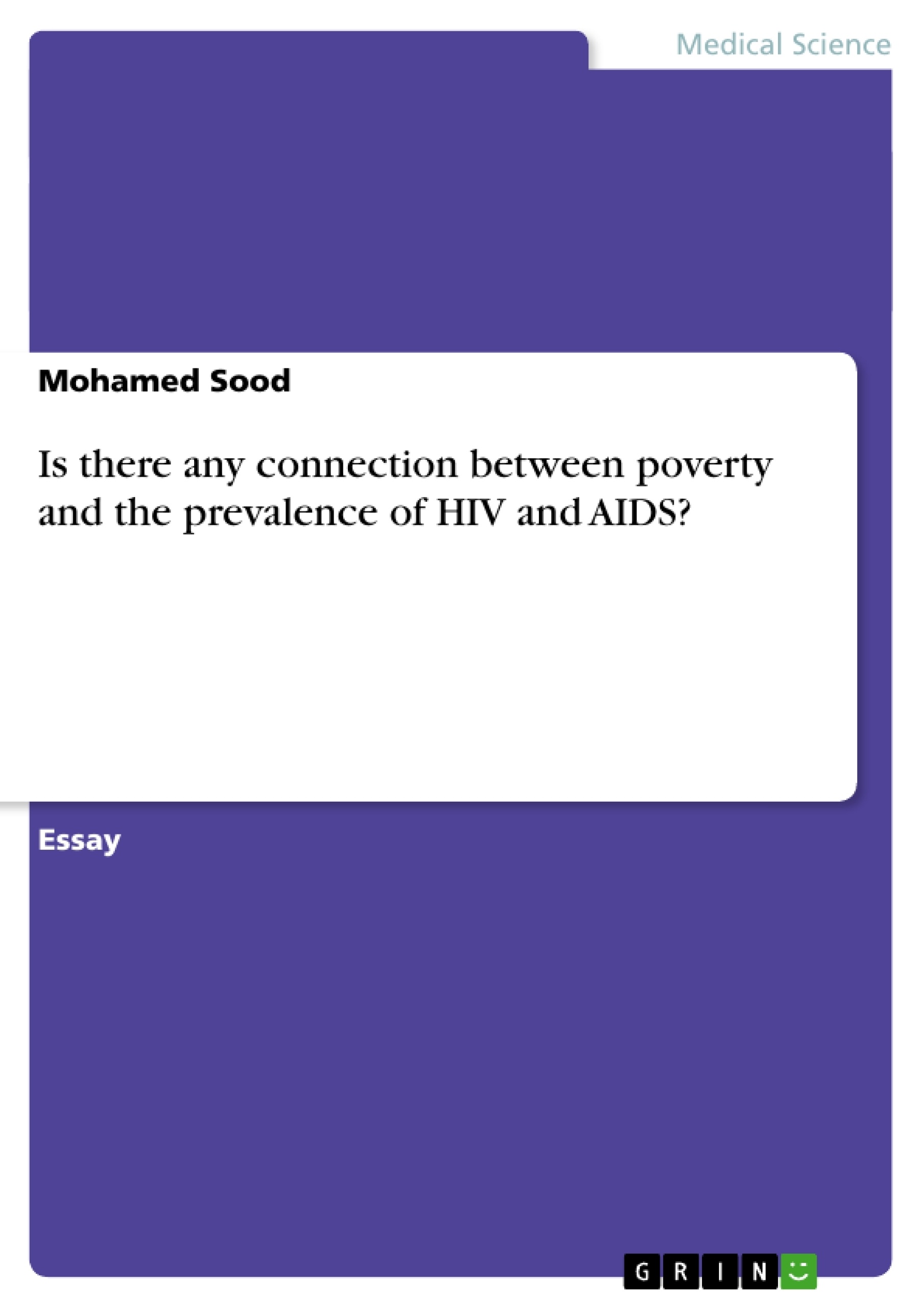The connection between poverty and HIV and it’s a marriage that needs to
be prevented.
To understand the relationship one has to make sense of the complex socioeconomic
processes in the society and not forgetting conceptualization of
poverty which is multi-dimensional. Poverty actually completes the vicious
cycle of HIV.
The estimated number of people living with HIV in 2009 was estimated to be
around 33.3 million by the United Nation Program on HIV/AIDS( UNAIDS),
in sub-Saharan Africa two thirds are infected with HIV and they are from
lower socio-economical groups, with women affected more than men(
Regional Statistic for HIV and AIDS, 2009)
High percentage of population living on less than 1 dollar per day have a
higher HIV prevalence as shown by the data provided by UNAIDS. (Global
Report, 2006) Industrialized countries have lower HIV prevalence, compared
to countries with high percentage of population living below 1 dollar. The
graph below shows the relationship between poverty and HIV.
Is there any connection between poverty and the prevalence of HIV and AIDS?
The connection between poverty and HIV and it’s a marriage that needs to be prevented.
To understand the relationship one has to make sense of the complex socio-economic processes in the society and not forgetting conceptualization of poverty which is multi-dimensional. Poverty actually completes the vicious cycle of HIV.
The estimated number of people living with HIV in 2009 was estimated to be around 33.3 million by the United Nation Program on HIV/AIDS( UNAIDS), in sub-Saharan Africa two thirds are infected with HIV and they are from lower socio-economical groups, with women affected more than men( Regional Statistic for HIV and AIDS, 2009)
High percentage of population living on less than 1 dollar per day have a higher HIV prevalence as shown by the data provided by UNAIDS. (Global Report, 2006) Industrialized countries have lower HIV prevalence, compared to countries with high percentage of population living below 1 dollar. The graph below shows the relationship between poverty and HIV.
Abbildung in dieser Leseprobe nicht enthalten
Sub-Saharan Africa is the world poorest region and it accounts for more than 60 percent of people living with HIV. People living with HIV in Sub- Sahara Africa are poor reflects that the epidemic has now spread. (Piot p, Greener R, Russell S, 2007) More than 14000 people are daily infected with HIV and 11000 are dying due to HIV/AIDS related illness in sub-Saharan Africa (World Health Organization, 2005)
Access to HIV treatment and prevention services is a challenge among poor and marginalized populations living with HIV. People infected with HIV, who receive treatment, survive on average 27.8 years instead of 11.7 years expected in the absence of treatment (United Nation Population Division, 2008 Revision).
Poverty plays a role in the transmission in HIV. First, poor people are more susceptible to HIV due to malnutrition that leads to weakened immune system and increase the chance of sexual transmitted infections and general poor health. The risk of infection with HIV heightened by high prevalence of such cofactors like nutrition, stress, which decrease immune response in HIV- negative persons
- Quote paper
- Dr. Mohamed Sood (Author), 2013, Is there any connection between poverty and the prevalence of HIV and AIDS?, Munich, GRIN Verlag, https://www.grin.com/document/215379
-

-

-

-
Upload your own papers! Earn money and win an iPhone X. -

-
Upload your own papers! Earn money and win an iPhone X. -

-
Upload your own papers! Earn money and win an iPhone X. -

-
Upload your own papers! Earn money and win an iPhone X. -

-
Upload your own papers! Earn money and win an iPhone X. -

-
Upload your own papers! Earn money and win an iPhone X. -

-
Upload your own papers! Earn money and win an iPhone X. -

-
Upload your own papers! Earn money and win an iPhone X. -

-
Upload your own papers! Earn money and win an iPhone X.

